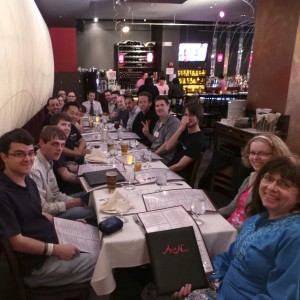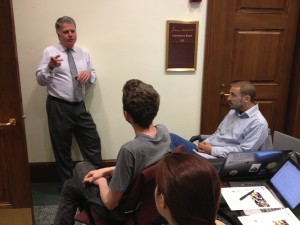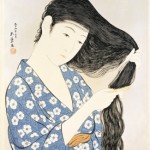Happy New Year from Wikimedia DC!
I am pleased to announce that Wikimedia DC has a new schedule of standing meetups: WikiSalons will be held on the second Wednesday of each month, while dinner meetups will be held on the last Saturday of each month. This schedule is in effect through December. We adopted this new standing schedule to make planning events easier. We will also announce other events throughout the year, including more edit-a-thons, so be sure to check the schedule often! You can find the latest schedule on the DC meetup page on Wikipedia.
Coming up in January we have two meetups: the WikiSalon on January 14 at 7 PM and the dinner meetup at Vapiano on January 31 at 6 PM. We hope to see you at our events!
As usual, if you have any questions or request any special accommodations, feel free to email [email protected] and we will be happy to help.
]]>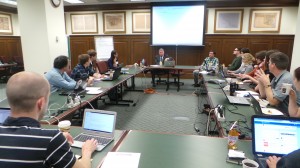
Participants at GLAM Boot Camp in Washington, D.C.
Recently, Wikimedia DC held GLAM Boot Camp, a new type of event which we hope will be repeated by others in the Wikimedia movement. The most basic aim of GLAM Boot Camp was to attempt to build the skills and capacity for the Wikimedia movement. It took place from April 26–28 in a conference room at the U.S. National Archives with 12 main attendees made up of experienced Wikimedia editors. The intensive, three-day workshop, hosted by myself and Lori Byrd Phillips, featured a mix of expert presentations, group discussions, breakout sessions, and hands-on tutorials. We were lucky enough that one of the Wikimedians in attendance wrote about the event in The Signpost, English Wikipedia’s newsletter, which gives a good recap of GLAM Boot Camp from a participant’s point of view.
The idea for a “boot camp”-type event was first proposed and developed at GLAMcamp London by members of the global Wikimedia community in September 2012. You can see our original notes from GLAMcamp here. We identified that, particularly in the United States, our main efforts had always been directed at reaching out to and winning over cultural institutions, but now we face a lack of online and real-world volunteers ready to meet the growing demand of institutions interested in contributing in some way to Wikimedia. Many potential projects have stalled not because of lack of cooperation, but because of lack of involvement by the Wikimedia community. Institutions do not yet have the expertise in Wikipedia to become Wikimedians on their own. Our largest bottleneck in GLAM-Wiki, therefore, is capacity. The stated, ambitious goal of the first GLAM Boot Camp was to broaden the participation of the general Wikimedia community in the GLAM-Wiki movement by inviting and training key Wikimedians. I think that we were successful in taking a big step towards that goal. Another goal was to establish a model for future similar events, and I hope that as we work on our documentation, others will be able to use our experiences to guide them in making another GLAM Boot Camp elsewhere.
All of us who have been to events like GLAMcamp or Wikimania know that oftentimes the most important part is not the structured sessions, but just being with a group people for a couple of days and sharing perspectives—even over coffee or back at the hostel. The main takeaways for me at these events were about the attendees. The fact that we fully funded all attendees from across the U.S. and Canada was integral to ensuring we were able to recruit new participants. Second, we specifically invited the people we thought would be key, rather than hoping people would sign up. This ended up making even more sense in retrospect, because we were so happy with who came, but if the idea was to reach people who were not normally part of GLAM-Wiki projects, we were trying to reach people who wouldn’t already be following our normal channels of communication and who would not inclined to sign up, even if they heard about it or were familiar with the goals of GLAM-Wiki. The geographic diversity of the participants we invited allowed us to hold an event with a variety of online experiences, and to provide Wikimedians who may not have been able to attend a meetup before to get to meet other Wikimedians face-to-face.
As co-organizer, I want to tease out a few more important points:
Attendees
We posted a list of attendees to the page; the names in green were those who we invited as full participants for the entire event. Of these, only about three had actually signed up or registered interest before we started sending out invitations. For the others, I spent hours looking for people; asking for opinions of others; and looking through user contributions of people who had participated in any GLAM WikiProjects online, in meetups, or in any of various other Wikimedia activities or subcommunities (such as administrators and featured content writers). Participants came from all over the United States (New York; Maryland; Los Angeles; San Francisco; Portland, Ore.; Philadelphia; Kansas; Michigan; and Chicago) and Canada (Halifax, Vancouver, and Winnipeg). No two people were from the same metropolitan area, and most came from areas without regular Wikipedia-related events. For many, this was their first time at a Wikipedia event of any kind. The size of the group, 12 invited attendees with no more than five organizers and guests, was the perfect amount to allow for productive discussions.
Program
We designed a program that was very unlike GLAMcamp and a lot more structured than most unconferences, but with more practical sessions than a traditional conference. It was something between a Wikipedia Academy, where newcomers are taught how to edit Wikipedia, and a campus ambassador training. You can see our program here. We generally moved from presentation-heavy to discussion-heavy sessions. The first day was our high-level overview of, and introduction to, cultural institutions and the history and present circumstances of GLAM-Wiki. Michael Edson’s inspiring opening talk was to give participants an insider perspective of cultural institutions, and we talked a lot about institutional missions and how to connect the work of Wikimedia with that of cultural institutions. The second day we moved into more practical matters, going through the whole “lifecycle” of a Wikimedia project, and talking about specific events and projects. By the third day, we spent more time in discussion, getting the boot campers to articulate their own visions of GLAM-Wiki and how they personally could contribute to it. We ended up having unplanned breakout sessions a couple of times because attendees were excited with ideas as we showed them things like our one-page guide that needed improvement. If you would like to dig into the Etherpad notes from each day, they are listed at the top of the program, linked above.
Logistics
The event was possible for us in the U.S. because logistics and funding were largely handled by James Hare and Wikimedia DC, which budgeted $8,000 for the conference from its program budget. Most of the money went towards funding the travel and accommodations of the attendees. All attendees were fully funded, and this was crucial. Most of the travelers had their flights booked by Wikimedia DC and stayed in a hostel (same as the one used for Wikimania 2012 and GLAMcamp DC). Wikimedia DC also hosted two dinners and provided refreshments throughout the day.
Speakers
The ambitious nature of the workshop, with three full days of programming, meant Lori and I spoke a lot. We broke things up a little by inviting special speakers in certain topic areas, often where they had as much or more expertise as either of us did. Some of these speakers were locals from the DC area that agreed to come in, and some were attendees we invited to present to the group on something they are skilled at. Examples include the Wikisource and Commons workshops, a session on event planning, and a session on grants and chapters. We also led off with special guests: Archivist of the United States David Ferriero gave a welcome address, and Michael Edson, who had just returned from keynoting GLAM-Wiki London, gave an epic talk for most of the first morning. At least half of the sessions were led by Lori or I, though, and future GLAM Boot Camps probably would want to find ways not to give so much work to two individuals, for their own sanity. 
Venue
The venue was provided by the U.S. National Archives, though there were pros and cons for this. The main pro was that there was no cost associated with securing a venue! We might have been able to find a room elsewhere without a cost, but 3 days, all day for no cost is a big ask. The other main benefit was that we were in a good location and were able to take advantage of having David Ferriero make appearances. We did face typical problems with working with a bureaucratic venue, like catering and security all taking more time than we wanted.
Outcomes
For me, the most important outcome was seeing attendees who were all not the same old faces come in, eager to get involved. Gradually, they took more ownership and responsibility for GLAM-Wiki, as they began to feel more empowered and a part of the effort. There were practical outcomes, like specific documentation or project pages to improve. More than that, though, most attendees came away intent on contacting local institutions or organizing their local Wikipedia community. I am as excited by the overall community-building I think we did around GLAM-Wiki, which will help it be more successful as it is more accepted and integrated with the Wikipedia community, as I am by any specific skills attendees may have learned or GLAM projects they may go off and start.
The need to reach out more to the Wikimedia community, as much as to cultural institutions, is something I feel very strongly about, so I am so glad we were able to hold this event, and grateful to everyone who made it possible and attended.
]]>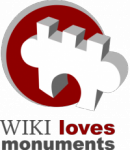 Lasting the whole month of September, Wiki Loves Monuments—USA is part of an international Wiki Loves Monuments
Lasting the whole month of September, Wiki Loves Monuments—USA is part of an international Wiki Loves Monuments
competition that anybody with a camera and internet connection can join in on. Focused on improving the number and quality of photos related to historic monuments and places, the Wikipedia community started a photo contest in 2010 in the Netherlands. The result was 12,500 freely licensed images of monuments that anybody can use for any purpose. In 2011, 18 countries participated in the contest resulting in 5,000 participants submitting more than 165,000 images.
This year, 2012, the contest has come to the US and will focus on sites on the National Register of Historic Places (NRHP) which volunteers have organized on Wikipedia by state and county, including other sites chosen by local Wiki Loves Monuments coordinators.
Every participating country will put together a national contest with partners, rules, events, and winners. Then every national contest will nominate some of their winning pictures for the international contest. An international jury will award extra prizes to the best images from all participating countries. The grand prize this year will be a trip to Hong Kong!
Any participation is welcome: from uploading a single image to spreading the word about the contest, to even becoming
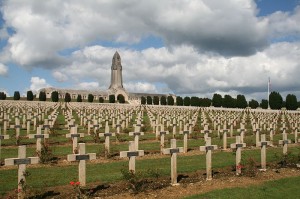
A winner of Wiki Loves Monuments 2011:
The cemetery with Douaumont ossuary (Verdun), France (Meuse, Creative Commons Attribution-Share Alike 3.0 Unported license.).
sponsor.
In the Washington, D.C. area we are lucky to have a cornucopia of historic buildings, statues, and towering monuments that are all ripe for the photographing. Take an afternoon, or even just a few seconds walking home from work, to take a picture of an old building or a statue and upload it in September to enter it into the contest. Take a tour with friends or family, or go on a solo hike around town. Participating is super easy. Just check out the already compiled list of historic places on Wikipedia at http://en.wikipedia.org/wiki/List_of_RHPs#Current_listings_by_state_and_territory and choose where you want to go.
On September 8th a group of energetic Wikipedians went forth on a photo scavenger hunt called Wikipedia Takes DC and took a plethora of great photos for Wiki Loves Monuments despite inclement weather in the afternoon!
Throughout September we will be having several uploading/meetup gatherings at the Starbucks on Dupont Circle so feel free to swing by and join the party!
Lisa Marrs, Outreach & Program Coordination, Wikimedia DC
]]>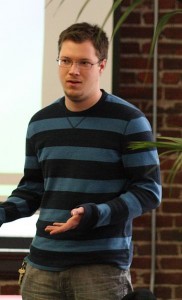
Dominic McDevitt-Parks during Campus Ambassador training
GLAM, the Wikimedian acronym for Galleries, Libraries, Archives, and Museums, equates to more than just the institutions categorized by the letters. It also encompasses the merging of communities. On August 13, 2012, Dominic McDevitt-Parks, the wikipedian-in-residence at the National Archives and Records Administration since May 2011, gave a talk labeled “Cultural Institutions and Wikipedia: a Mutually Beneficial Relationship” on what a symbiotic relationship between Wikipedia and a cultural institution can look like.
Introducing Dominic was Wikimedia DC’s own Kristin Anderson, who described the Wikipedian community to the Library of Congress audience as “the only people who like information as much as library catalogers are Wikipedians…Wikipedia and the Library of Congress share Thomas Jefferson’s dream of…information for everyone.”
In his talk, Dominic broke down how cultural institutions and Wikipedia can work together to form mutually beneficial partnerships. If the goal of an institution is to encourage the use of its materials, Wikipedia is a natural fit, being the 5th largest internet site. Dominic gave numbers and a visual to put it all into perspective. The National Archives website gets 17 million views a day. In contrast, a very conservative estimate of the number of views that the Wikipedia articles that use National Archives material receive every day is well over a hundred million. This isn’t pointing at a problem, but at a fact, and one that can lead to a solution for many institutions; Wikipedia provides a ready-made platform to spread not only information through articles, but also to put up source documents on sister projects Wikisource and Wikimedia Commons.
The National Archives takes full advantage of this online volunteer community by encouraging local Wikipedians to come to scan-a-thons and the online Wikipedian community to tag the uploaded scans and transcribe the text documents on WikiSource. Due to the tireless efforts of many Wikipedians, well over a hundred thousand documents have been scanned in and transcribed.
Even if the question of whether or not Wikipedia is a reliable source is raised, if a person sees a mistake on Wikipedia, it is up to him or her to make the change. Unlike other encyclopedias or collections, if people find a mistake on Wikipedia or one of its sister projects, they can correct it. There is a large community of editors watching to make sure the information is as accurate as possible. Recognizing that its own information is not infallible, the Archives has created a feedback page on its own website for people to post mistakes and corrections on.
Dominic summarized the role of a Wikipedian-in-residence nicely: the Wikipedian-in-residence provides access to the institution to the Wikipedia community and vice versa, which brings about not only community engagement, but also culture change within the institution itself, making it more open and accessible to the layperson. This is change which the National Archivist David Ferriero heartily embraces and encourages, in the words of one blogger during the National Archives ExtravaSCANza in 2011, “If it’s good enough for the National Archivist, it’s good enough for you.”
Lisa Marrs, Outreach & Program Coordination, Wikimedia DC
]]>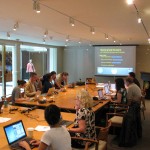
Editing away in the Luce Center
Sculptures dot the hallways and rooms alongside works of art representing more than 7,000 artists in the National Historic Landmark, the Smithsonian American Art Museum. Within the many-tiered Luce Center 15 people gathered; their quest, to embark upon an edit-a-thon focused on 30 different masterpieces hand picked by the museum Director, Elizabeth Broun. Before the program began, she spoke to everyone about how putting the museum’s art on Wikipedia is one of her overarching “subversive goals”.
Following a tour and a scrumptious lunch provided by the museum, everyone filed into the Luce Center conference room and started working. Many participants had never edited Wikipedia, but it wasn’t long before they whetted their first tooth. From artist Childe Hassam to a created article on the Nakoda Wikipedia everybody contributed something to the world’s largest online encyclopedia.
Georgina Goodlander, the Web and Social Media Manager at the Smithsonian American Art Museum and the wonderful lady without whose efforts this event would not have been possible, has now got an appetite for Wikipedia, she says. A definite success, she plans to make Masterpiece Museum a series instead of a one-time event. Some meetings may even take place on a Saturday to catch those who cannot leave work during the week.
To see the images uploaded during the event, click here. To see articles created or improved during the event, click here.
Lisa Marrs, Outreach & Program Coordination, Wikimedia DC
]]>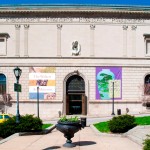
Charles Street entrance to the Walters Art Museum.
Down Charles Street in Baltimore, Maryland sits a museum basking in the hot summer sun like a contented cat, right across from the gloriously green, statue-populated, and many-fountained grounds of Johns Hopkins University. Within the museum’s cool, white marble halls and rooms rest thousands of art treasures, from ancient American statues to canvasses from the mid-1900s. This is the Walters Art Museum, completely free to the public, and the site of ArtBytes, a hackathon that debuted the weekend of July 27, 2012.
Hackers from as far away as New York came together with museum staff to figure out how to better the museum experience in a competitive, yet collaborative atmosphere. The teams worked through the weekend and most of them arrived at the ending presentations with nearly completed, if still rough, products. There was team Time Machine’s mobile app that could recognize a work of art and then show that work’s original color or an xray of that work depending on the images and information the museum has in storage. Team Pez-Head created a way to do 3D modeling of sculptures and then print them out in rather excellent detail to make art more accessible by making it “touchable”. Both Team Schrodd0n and WalTours made different kinds of maps for mobile devices for the Walters Art Museum to help visitors navigate exhibits. Dave Raynes, a team of one, worked on making the data shored up in the Walters databases more easily available to software, which was a great help to many other groups. Badgify the Walters was all about putting up QR codes around the museum for kids to find and scan to collect points by doing quizzes on the art works which would eventually culminate in collecting badges on a profile online.
Although all groups ‘won’ the competition and each received $500, the judges managed to pick out two favorites to shower $1000 on. The first was
“Put Art in its Frame,” a mobile application where you can choose what time period the exhibit is in and then see all the significant world events that happened during that time period. The second was “Tanzaku,” a mobile application taking from the Japanese idea of writing notes on strips of paper (tanzaku) and hanging them up for all to see, which is an idea already in effect in the Hashiguchi Goyo “Beautiful Women” exhibit, where visitors write their own tanzaku and put them up on wires. The mobile app is a way to leave comments on art pieces and exhibits, as well as on the museum itself, with the potential to be connected to various social networking sites. All of this provides a way to potentially go on a tour with absent friends and explore how various pieces of art have touched different people.
So many amazing projects came out of this hackathon, sprung from the creative minds and intense will of their creators. Tapping into this pool of talented people, the Walters Art Museum ultimately benefited, providing an example other Galleries, Libraries, Archives and Museums may follow. The museum is not only enterprising in terms of calling forth capable people to use their talents and grow new abilities, but it also furthers its own goals by tapping into existing projects such as Wiki Loves Monuments, an event coming up in September where people all over the globe will sally forth to take pictures of public objects of historic and/or artistic value and upload those pictures onto Wikimedia Commons, both to increase the stock of public domain photos and to enter their photos in a contest. The Walters’ Wiki Loves Monuments is accepting pictures now of public artworks all over Baltimore as an extension of their Public Property exhibit (although note that only pictures submitted to Commons during the month of September are eligible for the worldwide contest).
Lisa Marrs, Outreach & Program Coordination, Wikimedia DC
]]>
During Wikimania 2012, Jimmy Wales said that he hopes Wikipedia never has to black out again in protest, but that it can if the need arises.
According to Daniel Weitzner, Deputy Chief Technology Officer for Internet Policy at the Office of Science and Technology Policy, the government has kept its hands off of the Internet, allowing innovation to course and the Internet to grow from a small sideshow to the main event, from a small community of researchers to being an indispensable part of global infrastructure. If the Internet were to be an economic sector, he told the audience at the New America Foundation‘s panel discussion on Transatlantic Perspectives on Digital Rights and Online Privacy, it would make up 3.5% of GDP in all OECD countries. Despite this, there is still no Department of the Internet, which is a good thing, Weitzner explained, because of the very horizontal nature of the World Wide Web.
At the same time, we are becoming increasingly aware of the need to create legislation or norms to protect the privacy of the average Internet user. Although it is highly unlikely that an all encompassing, grand public policy treaty on the use and protection of personal information on the Internet will ever be signed, laws should still be made to protect consumer privacy and to let businesses know where boundaries lie. It’s not enough to let companies and people regulate themselves. In order to really make an effort to enforce consumer privacy and protection, the “bully pulpit authority” of government regulation must be used. This does not equate to infringing on the freedom of expression online, which would slow the growth of online businesses and innovation.
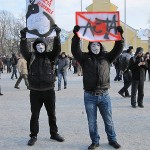
Anti-ACTA demonstrators in Tallinn
photo courtesy of Otto de Voogd (CC-BY-SA 2.0)
Three of the four panelists, Konstantin von Notz, Markus Beckedahl, and Jeanette Hofmann, all shared the German perspective on digital rights and online privacy. Beckedahl, the founder of netzpolitik.org, told the amused audience how in Europe, the potential for ACTA (the infamous treaty already signed by the US to strengthen copyright legislation) to be signed by their own governments created a stir. Starting with Poles literally jumping in the cold in protest of the treaty (the story of which was told during Wikimania 2012), demonstrations spread to Germany where tens of thousands showed up to protest any abridgement of online creativity, and then to different parts of Europe. Jeanette Hofmann, Co-Founder and Director of Alexander von Humboldt Institute for Internet and Society, announced her own plans to create a study challenging the pervasive economic assumption that copyright is essential to prevent market failure.
The fourth panelist was one of America’s own, Gigi B. Sohn, the director and co-founder of Public Knowledge, who managed to pull something positive out of the SOPA/PIPA fiasco. Americans, she said, are now more concerned about where their politicians stand on issues touching the internet. Even though SOPA and PIPA went to the backburner in the face of public outrage, Sohn warned that lobbyists are still pushing hard to increase IP protection through the creation of jobs in the IP department and through IP protection personnel in departments where ones haven’t been seen before.
There is a fundamental difference, Sohn emphasized, between legislating the content on the Internet and how that content gets there. The barriers to potential growth and innovation on the internet are not really created by controlling the on-ramps but by controlling the width and scope of the road itself, she said. Wikipedia itself helps to bring awareness to this issue. When Wikipedia blacked out in protest of SOPA and PIPA, Europeans began paying attention to the issue of government control of copyright on the Internet, said Beckedahl.
What we say on the Internet has global reach. The information we spread can touch the lives of people all over the world. Still, five billion people do not have access to the Internet, so there is still tremendous room for growth. In the spirit of providing free access to the sum of human knowledge, the Wikimedia movement should continue to raise awareness about potential legislature that may abridge that access and engage more people in the spread of information and the inevitable creativity and innovation that comes with it.
Lisa Marrs, Outreach & Program Coordination, Wikimedia DC
]]>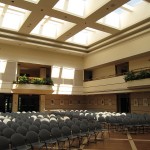
Photo courtesy of Gryffindor under the Creative Commons Attribution-Share Alike 3.0 Unported license.
The Austrian Embassy’s giant reception room was packed. Row upon row of quiet guests in formal evening attire sat beneath a wide, glassy sunroof allowing the last rays of the sun to soak quietly into the dim room. Even the people in blue and red in the paintings lining the walls seemed to be waiting. The stage was set and lit and an older woman with short, blonde hair took the microphone, “This is my last cultural event,” Andrea Schrammel, the Director of the Austrian Cultural Forum Washington, informed the waiting audience. Even though she had spoken these words several times before, it was much more real this time, as the Austrian government was calling her back to Vienna after four years in the United States.
After her brief introduction of the event, a musical duet by famed Jazz piano composer Michael Kahr and violin prodigy Barbara Helfgott, Wikimedia DC‘s own Nicholas Bashour, in a turquoise button shirt that matched the blues in some of the art around the room, took the stage as a sponsor of the event and told the expectant audience that this event is only the tip of the iceberg, that Wikimedia DC is active and looking for more opportunities to reach out to the international crowd.
Applauding, the people fell silent when Kahr, tall with a fitted black suit and mahogany hair feathering his neck, stepped out of the backroom alone and took the ready stage. Without preamble he sat down at the waiting piano and began. Soft and classical notes met strains of improvisation in a dizzying way as the last of the sunlight faded from the room and the only light came from the beams concentrated on the man and his piano.
After two songs, he finally arose, bowed to the applause, and addressed the audience saying how wonderful it was to be there that night and to introduce Barbara Helfgott as “the future of Austrian music”. She came striding out of the backroom in six inch sparkly white heels, sleeveless black dress that went to the top of the knees, and a brilliant smile, holding out her violin and bow as she crossed to center stage.
Nodding to the sound technician to her left and clenching the violin between her chin and shoulder, she smiled at Kahr and winked at the audience as the bada-tss of percussiondrums and other instruments began to throb from the speakers and wash out over the audience like the beginning ripples of a rising tide. Then Kahr joined in with the piano, moving back and forth on the seat, shoulders keeping the beat along with his fingers as they ran across the keys. Nodding and tapping her toes, Helfgott moved in, the first few notes screaming out from the violin like lost souls. The audience began to look restless, phones were brought out, someone left the room with fingers in her ears. Yet Helfgott smiled and turned to Kahr, nodding almost imperceptibly, and the real music began.

Austrian pianist Michael Kahr and Austrian violinist Barbara Helfgott, photo by Nicholas Michael Bashour, CC BY-SA 3.0
For forty or so minutes straight, Helfgott and Kahr coaxed wild and beautiful melodies from the piano and violin, intertwining and separating them from the background music thumping from the speakers. After finishing the first set, they returned for not one, but two encore performances. During the first encore, Helfgott introduced the next song, “I’m So Excited,” by taking the microphone and giving a short speech about how excited she was to be at the embassy, how excited the embassy people were to have her and Kahr, and she knew the audience was super excited, too. Then, Helfgott turned to the audience and said, “well, this concert is called From Mozart to Michael Jackson. There hasn’t been any Mozart, but, we have Michael Jackson,” after which she and Kahr played the finalist song: “Billie Jean” by Michael Jackson.
After the romping musical escapade during which Kahr shook his shoulders to the music and Helfgott danced as she played her violin, Helfgott and Kahr returned for a final encore, this time, a request from the audience. “Mozart, Mozart!” the audience chimed in, but, unfortunately, according to Helfgott, “Mozart did not really write a lot of pieces for piano and solo violin.” As a compromise, she played, on her own, a rendition of one of Mozart’s most famous and challenging arias, “Der Hölle Rache kocht in meinem Herzen” from the opera “Die Zauberflöte” (The Magic Flute).
After the concert, everyone broke for food and wine, and during the reception we had the opportunity to briefly interview these two great musicians.
Barbara Helfgott, with her amazing showmanship, got her start on the violin at the tender age of 5, and by 10/11, she was already winning contests and attending university classes for the musically gifted. After being turned away from philharmonics because “women can’t play the same as men,” she resolved to create her own philharmonic ensemble. And she did: the Rondo Vienna, a group of up to 25 women musicians that travels Europe and, in 2007, won the Austrian Show Award.
Although she doesn’t have a favorite location where she would love to play, she does want to play wherever there are “people who love music. There is a symbiosis between musician and audience: the musician expresses themselves through their music and the audience takes and gives back, in turn expressing themselves through listening.”
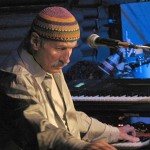
Joe Zawinul
Photo courtesy of Wikimedian, under the Creative Commons Attribution-Share Alike 3.0 Unported license.
Michael Kahr first became attached to jazz when he heard the music of Joe Zawinul, an Austrian-American jazz keyboardist and composer. With jazz, he says that “the music itself draws you in. It is a musical language, there are no definitive differences you can point to between Austrian, African, Australian, and American jazz even if there are some researchers now trying to find those differences.” And he has been all of those places in search of musical inspiration, studying jazz wherever he goes.
“When I was young, I knew I wanted to travel,” he added. He has visited America (the birthplace of jazz), Africa, the Middle East, and Australia in order to find traditional instruments, gather inspiration, and experience the music scene in those countries as well.
As the guests slowly trickled out from the embassy into the humid blanket of night with the orange glow of incandescent bulbs behind them, and those who live at the embassy climbed the stairs to their living quarters, no one had a cross word to say, or a regret for coming. Bridging cultures and languages, bringing people together to connect ideas, Wikimedia’s Embassy Outreach Initiative’s second event left everyone moon walking away with thrumming hearts and dancing minds.
Lisa Marrs, Outreach & Program Coordination, Wikimedia DC
]]>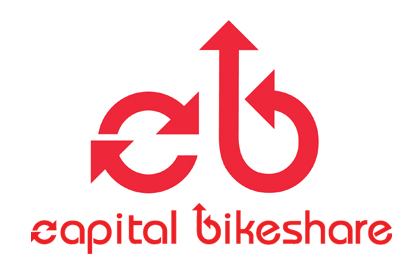 Wikimania’s coming to DC next week! With so much to do and see in this political, cultural, and economic center many of our guests might be overwhelmed. So leave a comment describing a spot in DC, be it a restaurant, museum, park, monument, street or library that either is your favorite, or, if you’ve never been in DC before, you are looking forward to visiting the most, and explain why that is. Let’s churn up some ideas so folks from outside the area can prioritize their to-visit list!
Wikimania’s coming to DC next week! With so much to do and see in this political, cultural, and economic center many of our guests might be overwhelmed. So leave a comment describing a spot in DC, be it a restaurant, museum, park, monument, street or library that either is your favorite, or, if you’ve never been in DC before, you are looking forward to visiting the most, and explain why that is. Let’s churn up some ideas so folks from outside the area can prioritize their to-visit list!
In the spirit of fun, we’re going to make this a contest based on the quality of reasoning behind why a place is your favorite.
]]>

Wikimania 2012, the international Wikimedia conference, kicks off next week. If you’re not registered, there are still free events that you can participate in and enjoy!
On Tuesday and Wednesday, we have our Hackathon, which includes a special session for new Wikipedia editors, so whether you’re a seasoned Wikipedia contributor, or a free knowledge enthusiast who has yet to fix an error or add a new fact on the world’s largest encyclopedia, then come down to George Washington University on July 10/11 and join the fun! Our partner for the Hackathon is OpenHatch, a non-profit dedicated to matching prospective free software contributors with communities, tools, and education.
If you are a librarian or just love libraries, you’ll be glad to know that we also love libraries, so join Wikipedia Loves Libraries on Wednesday, July 11, which features a special workshop for librarians, along with talks and panels.
On July 12 from 6:30 to 9:30, Consumer Reports and GLAM-Wiki US are hosting GLAM Night Out: Party & Media Panel at the Newseum, featuring a panel on “The Sponsored Point of View: Financial Conflicts of Interest in Health Care and Science.” The event is free, but guests must RSVP here.
If you’re interested in social media instead of GLAM, another event happening on July 12 is the official Zoomph Wikimania happy hour, happening at Tonic on 2036 G Street NW. The happy hour will include DJ, free drinks, prizes, and MetroStarSystems will be launching Zoomph, a new social media engagements and analytics tool, so make sure to RSVP here.
On Friday, July 13th, we’re lucky to have a lot of great events happening, and you can go to one, two, or all! Wikia is hosting a Wikia Celebrates Wikimania party at Famous Luigi’s Pizza on 1132 19th Street NW from 6-9PM. They’re offering pizza, drinks, and also, for the first 100 attendees, a free Wikia t-shirt, so make sure to RSVP here. The Saylor Foundation and the Wikipedia Education Program are hosting a Wikipedia Education Program meetup at the Saylor Foundation offices, 1000 Wisconsin Ave NW from 5:30-7:30pm. If you’re interested, make sure to sign up here.
Wikimedia DC and Capital Fringe invite you to the Wikimania Happy Hour at the Capital Fringe Festival Baldacchino Gypsy Tent Bar. The bar opens at 5 PM and Wikimania Happy Hour specials last until 7 PM. There will be some awesome shows all night, and the tent doesn’t close until 2 am! Mingle with other Wikimania attendees, DC residents, and artists from all over the US under the tent, and enjoy free music starting at 10pm.
On Sunday, July 15, we have our Unconference, which features various presentations and workshops submitted on the day by attendees and participants. Everyone is welcomed to attend and participate.
Also on Sunday July 15 is the Wiki Expedition, a photography expedition/contest taking place around Washington, DC and the nearby areas. Details and the sign up form are available here.
If you love maps and cartography, then you’ll love the OpenStreetMap mapping party, held in two parts, Part I at Congressional Cemetery (from 10-noon), and Part II at the Wikimania Lounge at George Washington University (from 1-3), on Sunday July 15.
You can participate in some or all events. They’re all free, and we hope to see you all throughout the week!
Nicholas Michael Bashour, President, Wikimedia DC
